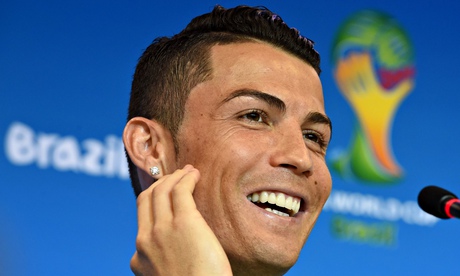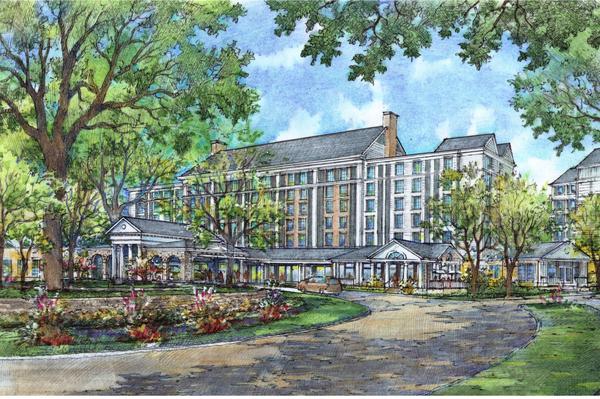Pelé calls him ‘the best player in the world’ but can he fulfill one remaining goal and win a trophy with Portugal at the World Cup?

Cristiano Ronaldo has declared himself 100% fit and ready to face Germany in Portugal's opening game. Photograph: Francisco Leong/AFP/Getty Images
Ever since leaving for the World Cup there has only been one question hanging over Portugal. A big question. Cristiano Ronaldo, though he kept a roomful of journalists waiting for more than an hour for his scheduled press conference, was eventually able to answer it himself. “I would like to be 110% fit but I am 100% fit and that should be enough to help the national team,” the Portugal captain said. “I am here to help, I believe I can make a difference, but one player is not a team. I cannot carry the national side on my own.”
If that might be termed a secondary question about Portugal, it has been hanging over them for a few years now. Ronaldo having outshone his perennial rival Lionel Messi over the course of last season, Portugal begin the World Cup against Germany with the world’s best player in their midst, a situation that last pertained when Eusébio helped them to third place in England in 1966.
“Having the best player in the world in our squad does not make it mandatory for us to win the World Cup,” said Portugal’s coach, Paulo Bento. “I have said this before to the people of Portugal. There have been times when we have had the world’s best player and not even qualified for the World Cup.”
International football is an arena where Ronaldo consistently outscores Messi. Whereas the latter seems to save his most scintillating performances for Barcelona and to date has struggled to be anything like as effective for Argentina, Ronaldo is unquestionably Portugal’s main man. Captain, record goalscorer, most recognisable performer and currently biggest injury concern, he dominates Portuguese football to a degree that is almost unhealthy.
Actually, there is no need to be so circumspect. Portugal’s reliance on a player Carlo Ancelotti described as “extraordinarily consistent” after finishing as Champions League top scorer for a second successive season is definitely unhealthy. Next to “the best player on the planet” (Diego Maradona, 2012), Portugal’s other forward options look positively weedy.
Hélder Postiga, Nani and Hugo Almeida have their virtues but they are not going to kick sand in anyone’s face, with the possible exception in Almeida’s case of lacklustre Ireland in last week’s final friendly. Most people are slightly surprised to find they are still around, such is the forcefield effect that Ronaldo’s presence on the pitch exerts.
Nowhere was this better demonstrated than in Portugal’s play-off success over Sweden, the other international side fuelled almost exclusively by the gifts of a single player. All too predictably, and far from inaccurately, the showdown was billed as a contest to decide which extravagant individual talent would have to sit out the World Cup.
Zlatan Ibrahimovic did his bit, scoring twice in the decisive game, but it was not enough because Ronaldo weighed in with a memorable three. Almost by himself Ronaldo took Portugal to Brazil, although it sometimes feels that Ronaldo takes himself to the major tournaments and Portugal merely turn up as part of his entourage.
At the end of his first season at Manchester United the winger played in the 2004 European Championship final against Greece, an up-and-coming talent just beginning to impress old hands such as Luís Figo, Rui Costa, Deco and Ricardo Carvalho. He has since moved from the wing to centre stage in every sense, accepting responsibility to lead the attack and create goals and more often than not proving successful. “Portugal depend a lot on Ronaldo,” Figo said, a little unnecessarily. “He is the No1.”
Within Portugal there is no doubt about that. Even on the world stage he has a significant backer in Pelé, who rates him more highly than Messi on the grounds that Ronaldo is a more direct attacking handful for defenders to deal with. “Messi comes from behind like I used to do,” Pelé said. “Ronaldo is more important because he is the player who scores goals from the front.” For Argentina at least Messi has been known to blend into the background, and recognising that as a failing Alejandro Sabella has attempted to build his side around the Barcelona forward’s talents.
Portugal have been playing a support act to Ronaldo for years and the Real Madrid player, at 29, as long as he can stay fit, is at the right age to make his strongest impact yet on a World Cup. Certainly Sir Alex Ferguson, who brought him to England in 2003, believes he is at the peak of his powers. “In the six years we had him at Manchester United you saw his game grow all the time,” Ferguson said. “Now you see the complete player.”
The only doubt surrounding Ronaldo’s contribution to this World Cup is over his fitness. He has tendonosis in his left knee as well as a separate muscular problem in his left thigh, and while they are not the sort of injuries that would rule him out of a tournament they may render him less explosive and therefore less effective. A team that has grown so dependent on a single star player could struggle in a difficult group if he is below his best.
The nation breathed a sigh of relief when Ronaldo played for an hour against Ireland and performed with such conviction that the injury question was set aside, yet while he now seems certain to start against Germany, there are no guarantees he will complete that game or be completely untroubled in the ones that follow.
Perhaps rashly, Ronaldo once said he would be fully content with his career only when he had won a trophy with Portugal. He is not exactly running out of time, it is just that Portugal’s development is not keeping pace with his own. Leaving aside the fitful and frequently distracted Nani, whose shortcomings are familiar to Manchester United supporters, the next most stellar presence in the Portuguese side is probably João Moutinho, a midfielder who joined Monaco from Porto for around £20m at the start oflast season and has been a regular international since the 2006 World Cup.
Moutinho was one of the most eye-catching players in Portugal’s run to the semi-finals of the European Championships two years ago but his first season in France has not gone well. L’Equipe voted him among their five biggest disappointments of the season after a promising start at Monaco tailed off into anonymity, and even when playing well Moutinho has never been a prolific goalscorer for club or country. William Carvalho, an Angolan-born defensive midfielder, is rapidly making a name for himself and should feature in Brazil whether Paulo Bento opts for the usual 4-3-3 or a more defensive 4-4-2, but with Ricardo Quaresma not even making the squad Portugal would be short of width and attacking inspiration should their regular source of ideas find himself compromised.
As an unapologetic show-off with a repertoire of tricks and a reputation for conning referees, Ronaldo has always divided opinion and did little to enhance his popularity rating among neutrals with his ridiculously over the top celebration after scoring from the penalty spot when Real Madrid won their 10th European Cup last month. The only thing funnier than Ronaldo taking the chance to show off his finely-honed torso after scoring a practically meaningless goal was Rio Ferdinand’s attempts to defend him.
Apparently it is reasonable to act like that if you have a supermodel girlfriend. Ferdinand was on firmer ground explaining what drives his former team-mate. “He is an exhibitionist,” the former England defender said. “His ego is gargantuan.” In Salvador on Sunday, Ronaldo bridled a little when asked if he needed a World Cup to complete his career. “I don’t think I have to show anyone anything,” he said. “Look at my statistics, my resume. I don’t have to demonstrate anything to anyone. All I want to do is continue my career.”



